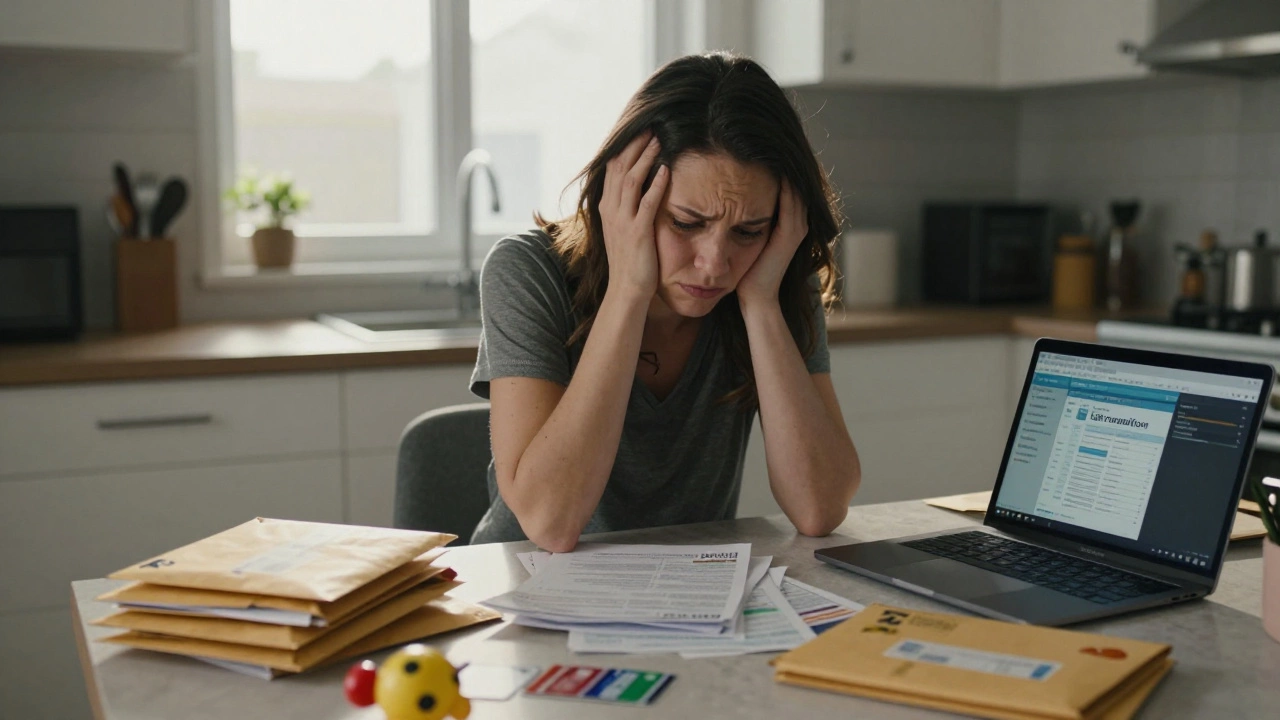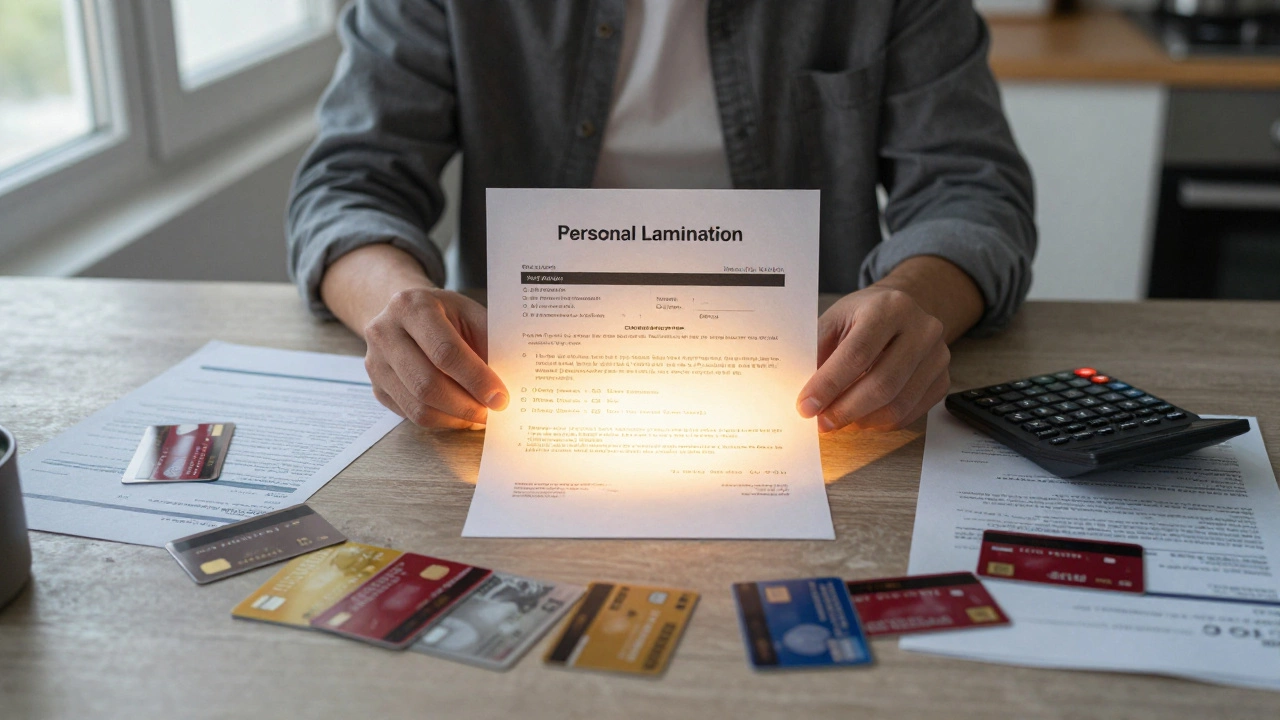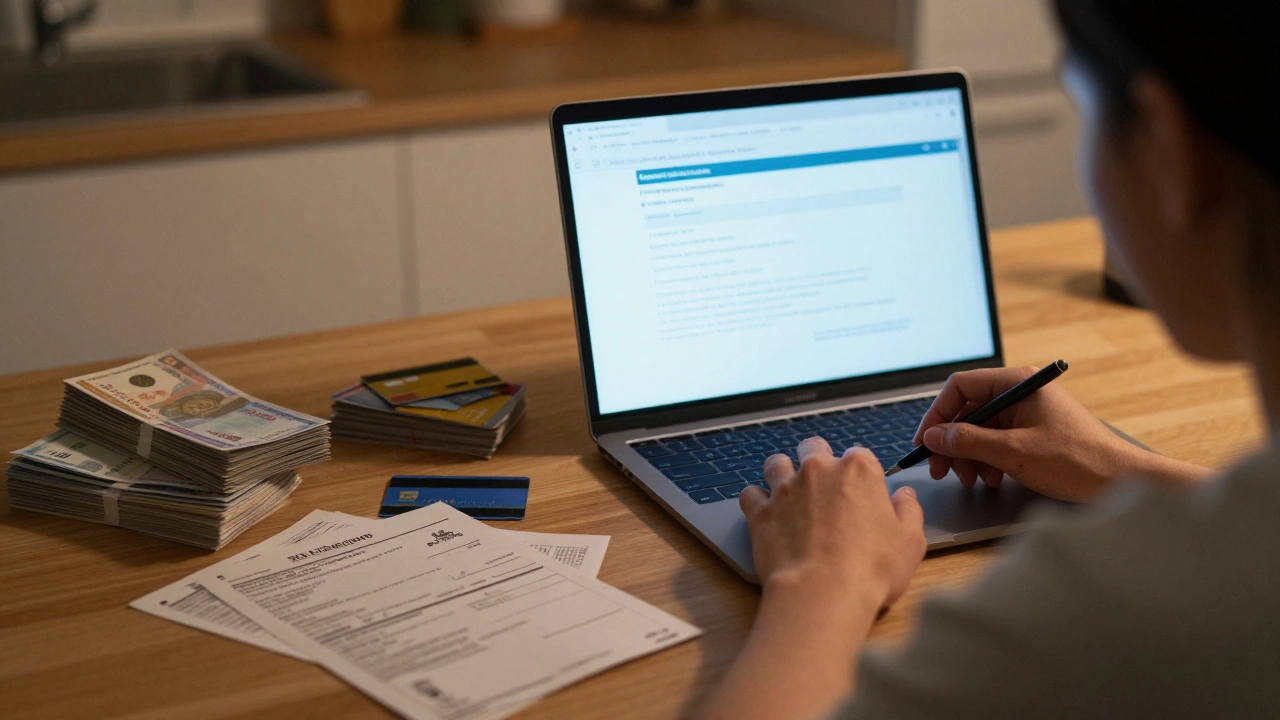So, you've decided you need a $10,000 loan. Now, what's this going to cost you every month? Good question! It all depends on a few key factors, like the interest rate, loan term, and any additional fees. Let’s break it down.
First off, interest rates. They're kind of a big deal. A lower rate means you'll pay less over time, and that directly affects your monthly payments. For instance, snagging a loan at a 5% interest rate compared to a 15% can mean a big difference in what comes out of your pocket every month.
Next up, loan term – how long you’re planning to take to pay it back. Short-term loans might mean higher monthly fees but less interest in the long run. Stretching it out with a longer-term loan could ease the monthly burden but might leave you paying more in interest over time. It's all about finding a balance that suits your financial situation.
- Understanding Loan Basics
- Breaking Down Interest Rates
- Term Length Impact
- Hidden Fees and Costs
- Tips to Keep Your Payments Low
Understanding Loan Basics
When you’re considering a personal loan, especially one for $10,000, it's crucial to wrap your head around some basic concepts before diving in. Firstly, a loan is essentially borrowed money that you'll pay back over time with interest. It sounds simple, but there's more to the picture.
For starters, loans come with an interest rate, which is the cost of borrowing the money. It can vary based on your credit score, the lender, and market conditions. A lower interest rate is preferable as it means you'll pay less over the life of the loan.
- Principal Amount: This is the actual sum of money you're borrowing, in this case, $10,000.
- Interest Rate: Usually expressed as an annual percentage rate (APR), this dictates how much extra you'll pay on top of the principal.
- Loan Term: It’s the time frame over which you'll repay the loan. It could range from a few months to several years.
- Monthly Payment: The chunk of cash you must pay each month, which includes part of the principal and interest.
Now, let's mention some figures to give you clarity. According to recent data, the average interest rate for a personal loan is around 9.41%, but it might range from 6% to 36% depending on your credit profile. Here's a quick look:
| Credit Score Range | Average Interest Rate |
|---|---|
| Excellent (720-850) | 6-8% |
| Good (690-719) | 9-12% |
| Fair (630-689) | 13-15% |
| Poor (300-629) | 16-36% |
Understanding these elements helps you compare loan offers effectively. By knowing what factors into your monthly payment, such as interest rates and loan terms, you can make informed decisions that best fit your financial situation.
Breaking Down Interest Rates
Interest rates are a big deal when it comes to personal loans. They determine how much extra you’ll pay on top of that $10,000 you're borrowing. Think of them as the price of borrowing money. But what exactly are they made up of?
Interest rates can be fixed or variable. With a fixed rate, your monthly payments are predictable and stay the same throughout the term. This offers peace of mind, as you'll know exactly what to expect each month. On the other hand, variable rates can fluctuate. They might start lower than fixed rates, but they can also increase, which means you could end up paying more eventually.
The rate you get is influenced by your credit score. The better your credit, the lower your interest rate, since lenders see you as less of a risk. For example, if you have a stellar credit score above 750, you might snag a loan under 6%, while folks with scores below 600 could be looking at 15% or more.
Let’s look at an example. Imagine a $10,000 loan at a fixed rate:
| Credit Score Range | Interest Rate | Monthly Payment (3-Year Term) |
|---|---|---|
| 750+ | 5% | $299 |
| 650-749 | 10% | $323 |
| Below 650 | 15% | $347 |
As you see, interest rates aren’t just a number—they're what can make or break your monthly budget. It's why shopping around for the best loan cost is crucial. Compare multiple offers and don’t just settle on the first one.
Want a better rate? Work on boosting your credit score by paying bills on time, reducing debt, and checking your credit report for errors. It might take some time, but you'll thank yourself when you see those interest rates drop.

Term Length Impact
Alright, let's talk about how the length of your loan term can really shake things up. When you take out a $10,000 loan, the term length, or how long you plan to repay it, plays a crucial role in determining the affordability of your monthly payments.
Here's the deal: a shorter loan term might mean a higher monthly payment, but it often comes with a lower total interest cost. Why? Because you're shrinking the timeframe the interest has to compound. Makes sense, right? You're paying off the debt sooner, which means less time for interest to build up.
On the flip side, longer loan terms lead to smaller monthly payments, making it easier on the wallet month-to-month. But, and it’s a big but, you end up paying more in interest over the life of the loan. This is because the interest rate has more time to do its thing and add up.
Here's a quick look at the numbers:
| Loan Term | Monthly Payment | Total Interest Paid |
|---|---|---|
| 2 years | $438 | $520 |
| 5 years | $189 | $1,320 |
See the difference? A shorter term costs more per month but leaves you lighter in the long run. Something to chew on when you're crunching those numbers.
Curious about how long-term versus short-term personal loans compare from a financial health perspective? Consider this: shorter loans can also free up your cash flow sooner, giving you more flexibility down the line for other expenses or savings once the loan is paid off.
Thinking ahead is key. Weigh your current monthly budget against your long-term financial goals. Need more details or personalized advice? Don't hesitate to talk to a financial advisor who can help you figure out the best fit for you.
Hidden Fees and Costs
When you're eyeing a $10,000 loan, you might think the monthly payment calculations are as simple as the interest rate and the loan term. But hold on a sec—there might be more costs sneaking in there. These extra charges can really catch you off guard.
First, let’s chat about origination fees. Some lenders charge this fee to process your loan application. It’s usually a small percentage of the loan, say 1% to 5%. On a $10,000 loan, that might mean an extra $100 to $500 right off the bat.
Then there are late fees. Life happens, you might miss a payment date, and boom – a fee gets tacked on. It's crucial to understand how much it'll cost if you slip up, as even just one late payment can add up over time.
Don't forget about prepayment penalties. What’s that, you ask? It's a fee for paying off your loan early. Sounds crazy, right? Not all loans have this, but some do. Lenders might want to make the full interest amount they expected, so it's their way of making sure they don't lose out.
Insurance might get bundled in too, sometimes called 'credit insurance'. Lenders offer this to cover payments if you can't. While it can be handy, make sure it’s worth it and not just another line item increasing the cost.
Here's a quick table showing potential charges and their average costs:
| Fee Type | Average Cost |
|---|---|
| Origination Fee | 1% - 5% |
| Late Fee | $25 - $50 per occurrence |
| Prepayment Penalty | Varies, depending on lender |
| Credit Insurance | Depends on the policy |
So, when calculating that monthly payment, don't just consider the interest rate. Always check the fine print for these additional charges. It’s key to ask your lender upfront about any potential extra fees. This way, your loan cost doesn’t balloon unexpectedly.

Tips to Keep Your Payments Low
Want to snag a $10,000 loan and not break the bank each month? Let’s look at some smart moves to keep those payments in check.
Personal loans can be tricky, but you can definitely make them work for you. Here’s the lowdown:
- Shop Around: Don’t just settle on the first offer you get. Check out different lenders to see who’s offering the best interest rate. Lower rates mean lower monthly payments.
- Consider a Shorter Term: Yes, this sounds counterintuitive because shorter terms usually hike the monthly rate a bit, but they can save you a bundle in interest overall.
- Negotiate Fees: Some lenders stack on origination fees or prepayment penalties. Ask if they’ll waive or reduce them—it never hurts to ask!
- Boost Your Credit Score: A higher credit score usually means better loan terms. Pay down debts and check your credit report for errors before applying.
- Set Up Auto-Pay: Some lenders offer discounts if you set up automatic payments. It’s a win-win; saving money and ensuring you don’t miss payments.
Finally, here's a quick peek at how rates vary. See below how much you might pay monthly at different interest rates for a standard 3-year term.
| Interest Rate | Monthly Payment |
|---|---|
| 5% | $299.71 |
| 10% | $323.51 |
| 15% | $348.46 |
Armed with these loan cost tips, you're all set to approach your lender with knowledge on your side. Make sure your monthly payment works for you, not against you!









